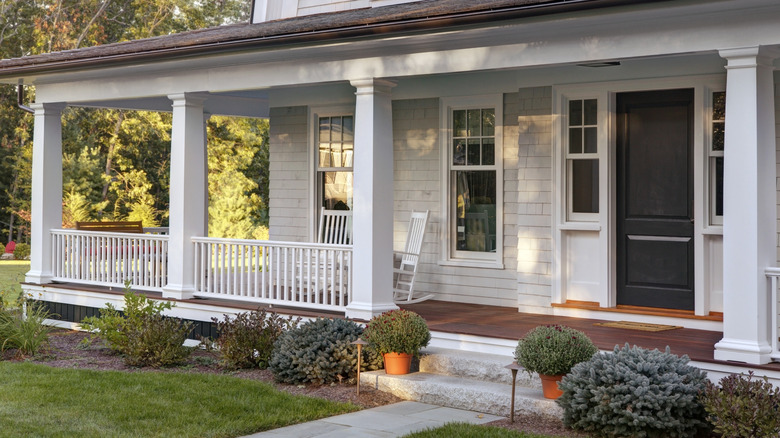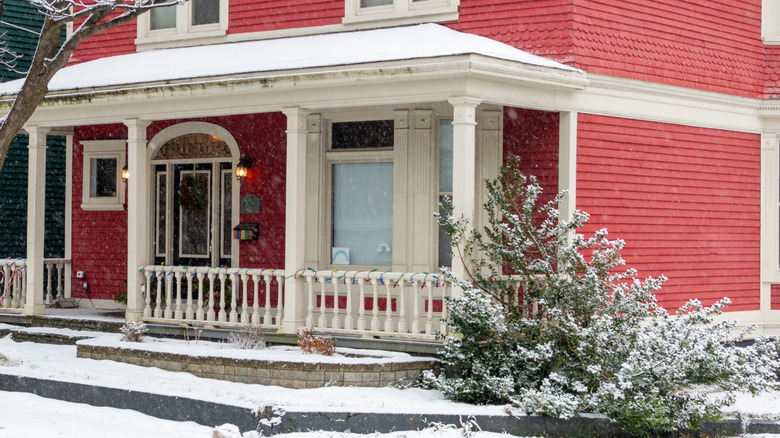Downsides To Consider Before Installing A Veranda In Your Outdoor Space
For anyone that's a fan of being outside, finding ways to make your yard more outdoor friendly is imperative. Cue the veranda. It's an excellent way to fully maximize your outdoor space whether you're hosting dinners with friends or simply lounging on furniture. Before you commit to an extensive project like a veranda, though, you should consider their downsides. Verandas are a luxurious addition that can bring a lot of life to your home, but they can also come with a luxurious price tag and present a challenge to even the most avid DIY-ers. While they can be a great option for outdoor-lovers, their open design means verandas aren't ideal for all seasons.
Generally speaking, verandas are similar to porches, but there are some differences you should know before adding either to your home. Verandas are much more expansive and are attached to more than one side of your home. While you can find enclosed verandas, most are open-aired, and they always include a roof, unlike a wrap-around porch. All of these factors combined make verandas one of the more expensive outdoor additions. Installing an average veranda costs between $60 to $150 per square foot, depending on factors like the building materials you choose. There are far cost-effective alternatives for upgrading your backyard such as an open porch, which runs about $40 to $120 per square foot, or a simple pergola, which is still an affordable and stylish backyard upgrade.
Planning, materials, and cold climates are stacked against you
Verandas can be less DIY-friendly than other spaces like pergolas or patios. Before installation even begins, you could need a permit from your city, and you may be subject to various inspections throughout construction. Even when the paperwork is done, you'll still need to design and construct a veranda that attaches to your home safely. Depending on your experience level, this is one project that's usually better handed to the professionals.
If you decide to go ahead with building a veranda, you should do plenty of research to determine the proper materials for your home. For example, there are a variety of roofing options like glass, polycarbonate, and aluminum. Polycarbonate is one of the more popular options because you can get it in a variety of transparencies, including ultra-clear that is similar to glass, and it's very durable while still being lightweight. Otherwise, you could choose a roofing material that ties in seamlessly to your home's existing roof.
Just because you can install a veranda in any climate doesn't mean you should. There's a reason that verandas are often associated with grand, Southern architecture. Open-aired spaces are problematic when it comes to cold weather, and a veranda won't protect against snow, rain, or high winds. You can winterize your veranda by adding underfloor heating, patio heaters, or a fireplace. However, these features raise the overall cost, and if you're in an extreme cold-weather climate, you may still find that your veranda is out of commission for several months of the year. In these cases, a sunroom or conservatory could be a more enjoyable investment.

